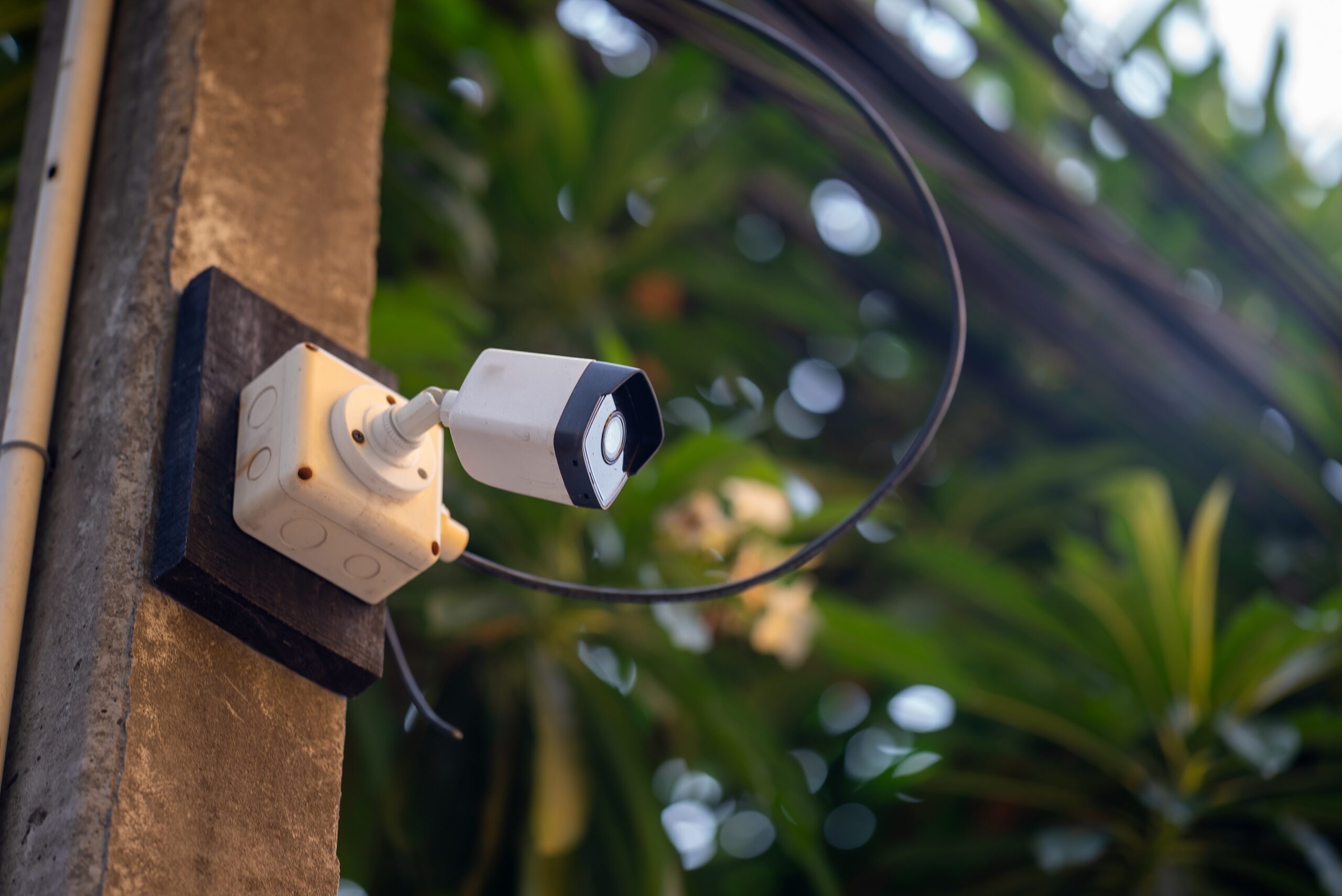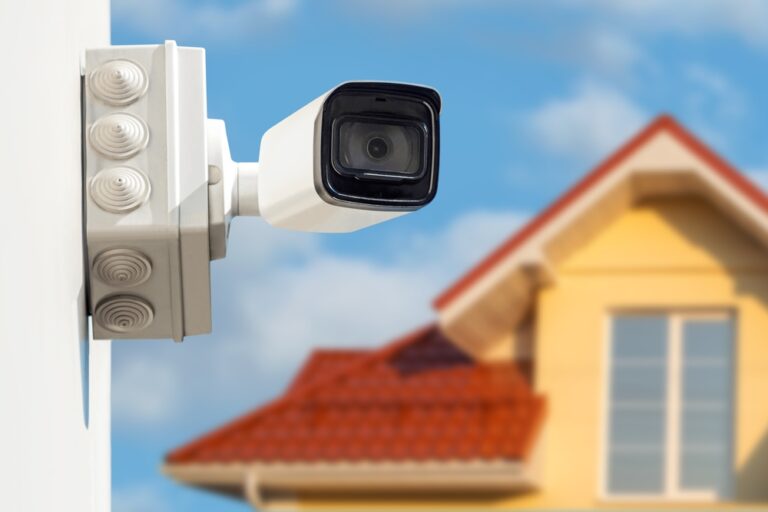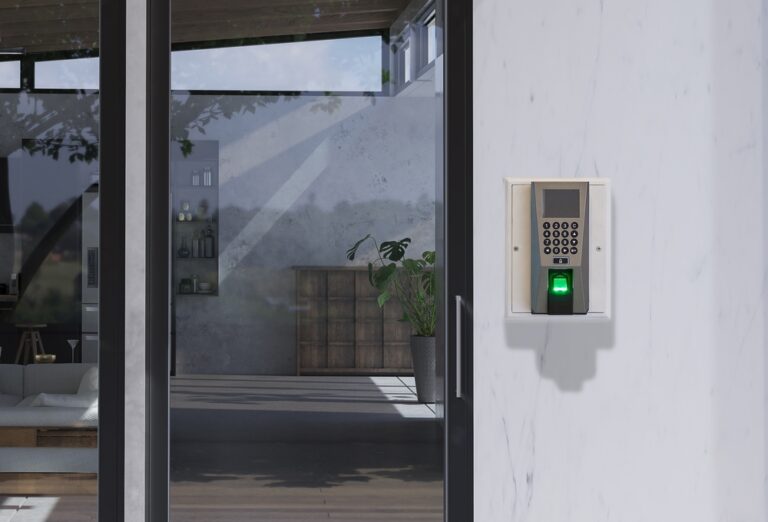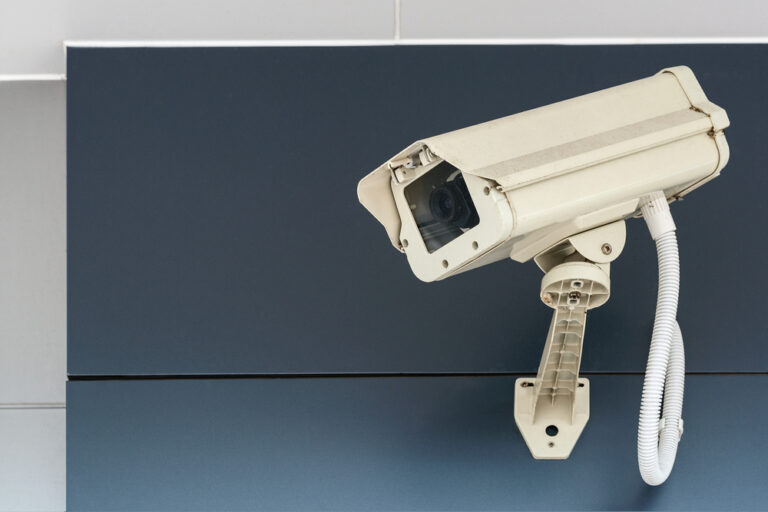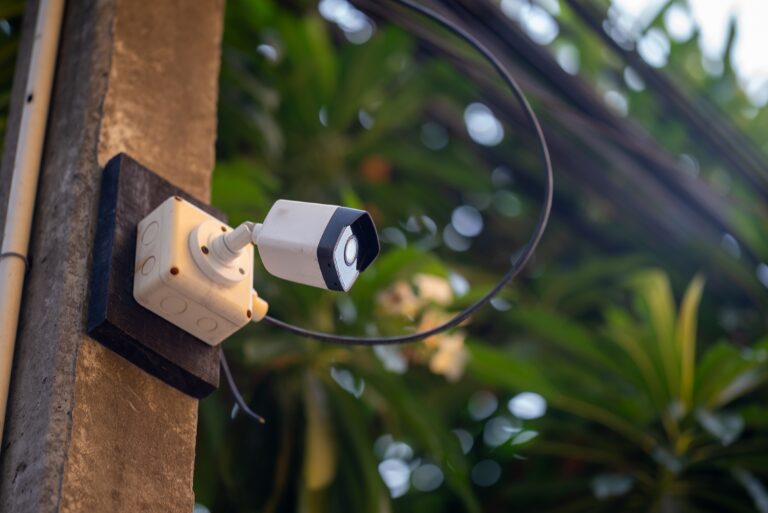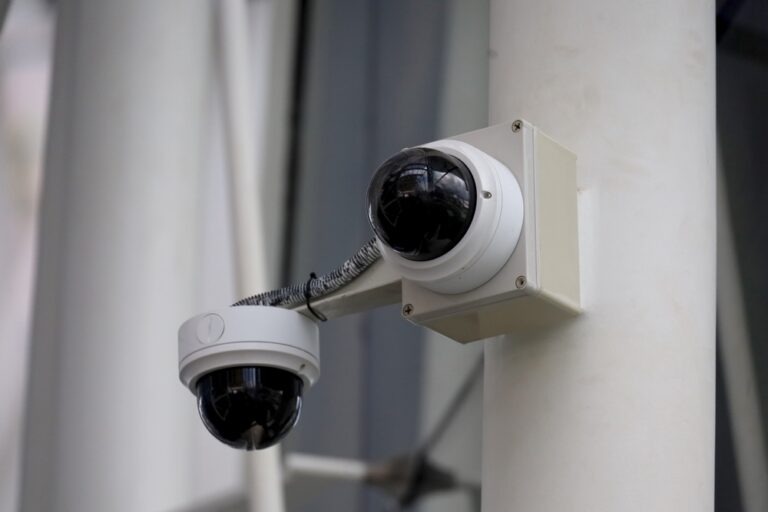- 1) Introduction
- 2) What is a Wireless Intercom System?
- 3) Benefits of Using a Wireless Intercom System for Your Office
- 4) Factors to Consider When Choosing a Wireless Intercom System
- 5) Types of Wireless Intercom Systems
- 6) Choosing the Right System for Your Office Size
- 7) How to Install a Wireless Intercom System in Your Office
- 8) Maintaining Your Wireless Intercom System
- 9) Tips for Maximizing the Use of Your Wireless Intercom System
- 10) Conclusion
-
11)
FAQs
- 11.1) What is the typical operating range for wireless office intercom systems?
- 11.2) How long with a wireless intercom’s rechargeable batteries typically operate between charging?
- 11.3) What wireless frequency band is best for radio interference resistance?
- 11.4) Can wireless office intercom systems connect multiple buildings?
- 11.5) How can existing wired office intercoms be upgraded to wireless?
Introduction
A wireless intercom system is an invaluable communication tool for any office environment. It allows staff to quickly and easily connect with colleagues in different parts of the building to coordinate tasks, answer questions, or respond to emergencies.
| Key Takeaways |
|---|
| Wireless intercoms improve workplace communication, efficiency, and security with instant push-to-talk contact between staff. |
| Matching intercom range, capacity, and feature set to office size and layout ensures optimal performance. |
| Full-duplex systems allow simultaneous natural conversation while half-duplex saves airtime. |
| Proper installation optimizes coverage across facilities and minimizes dead zones. |
| Regular maintenance like charging batteries and wiping stations preserves quality over years of daily use. |
Unlike shouting down a hallway or tracking someone down to relay a message, a wireless intercom enables instant, push-button communication that saves tremendous time and effort. These systems boost productivity, security, and workplace efficiency.
When choosing a wireless office intercom, it’s important to select the right system for your needs. The optimal system depends on office size, number of staff, budget, and required features. This article will guide you through the key factors in choosing the best wireless intercom for your specific office setup.
We’ll overview the benefits of going wireless, compare types of systems, and provide tips on installation, usage, and maintenance. Read on for everything you need to pick out, set up, and utilize an office intercom that streamlines communication and makes your business run more smoothly.
What is a Wireless Intercom System?

A wireless intercom system provides instant voice communication between multiple fixed intercom stations without the need to run physical wires between them. The systems utilize radio wireless technology to connect a central base station to multiple remote satellite stations.
Here is how wireless intercoms work:
- The base station connects to a power source and landline phone system if available.
- Remote satellite stations can be installed in any location within the operating range/coverage area of the base station. These stations run on battery power.
- Using a push to talk button on any remote station allows instant voice broadcast to the base receiver and other remote units.
- Transmissions utilize radio frequencies and one-way or two-way communication, depending on the intercom system type. No in-wall wiring is required.
Key advantages of wireless systems are quick installation, flexibility to add/relocate satellite stations, and usage in temporary locations. They also avoid the hassle and expense of infrastructure changes needed for a wired intercom.
Benefits of Using a Wireless Intercom System for Your Office

Wireless intercoms provide a wide array of benefits that make them an excellent communication solution for workplaces of all types and sizes. Installing an office intercom delivers advantages in three key areas:
Improved Communication and Efficiency
A wireless intercom system becomes the central nervous system for workplace communication. It enables rapid contact between employees to quickly handle questions, requests, coordination, and more.
Rather than tracking someone down or waiting for email replies, radio-enabled instant voice access saves tremendous time. This empowers staff to resolve issues faster and keeps workflow smooth.
Intercoms also facilitate oversight and management. Bosses can easily muster employees, check progress, provide guidance, and boost productivity. Enhanced coordination ability gets more done in less time.
Increased Security and Safety
Office intercoms play a pivotal role in maintaining workplace safety and responding quickly during emergencies. One-touch access allows any employee to issue an urgent campus-wide alert to enact emergency procedures.
Intercoms also empower seamless communication with security teams. Suspicious activity can be immediately reported to deploy personnel right away. Faster response times improve safety.
Flexibility and Convenience
Wireless intercom setups allow tremendous flexibility for business communication. Satellite stations can be situated anywhere within range and easily shifted to new locations as needs evolve. New areas of a building or campus can be covered without costly new wiring.
The systems also offer great convenience and accessibility. Employees don’t need to be tethered to a desk phone. Portable wireless stations allow connectivity from any room or outdoor area across the premises. This allows staff to be reached site-wide via the intercom system.
Factors to Consider When Choosing a Wireless Intercom System
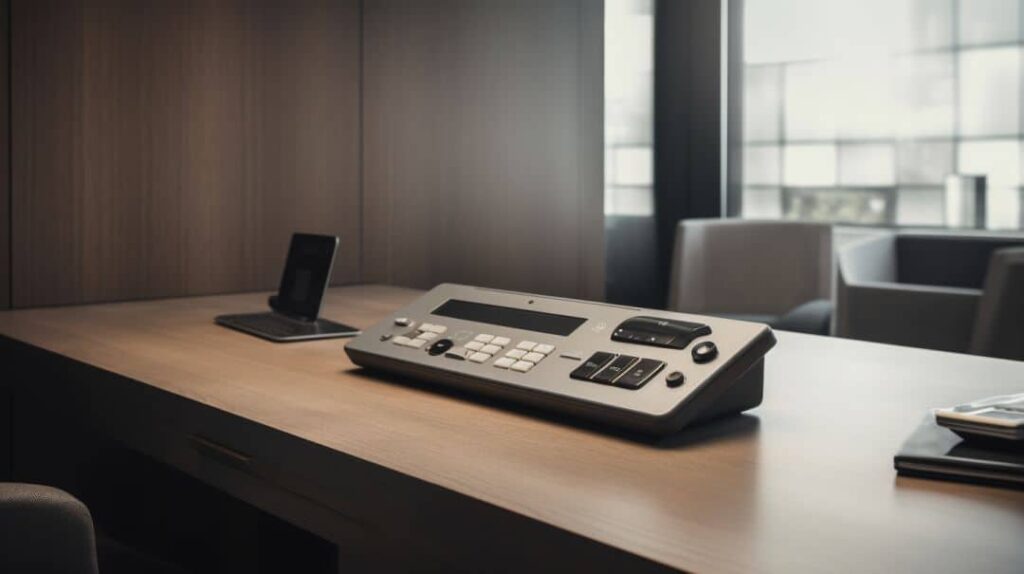
Selecting the right wireless intercom system for your office depends on taking key performance factors into account and matching them to your needs. When researching and comparing options, be sure to evaluate:
Range
The operating range indicates the maximum distance between intercom base and satellite stations while preserving clear communication. Assess both indoor (through walls and floors) and open outdoor line-of-sight range.
Indoor range spans from about 200 ft for basic systems up to 800 ft for more powerful commercial setups. Outdoor line-of-sight distance can reach 1/2 mile or more.
Make sure range capabilities sufficiently cover your office footprint both internally and peripheral yards/parking. Expandability for future growth should also be considered now.
Channels and Codes
Wireless systems transmit via coded radio channels measurable in frequency ranges. More advanced choices offer multiple channel/code options.
Why does this matter? Using a different channel or security code for each office department partitions communications. This prevents channel clogging and allows more private conversations between workgroups.
Interference Resistance
With radio communication, signal interference leading to garbled voices is a potential issue to guard against. Examine the signal encoding method and frequency hopping capability of the intercom.
Voice Clarity
Crystal-clear audio ensures seamless interoffice chatter without repetition or miscommunication. Seek out systems with HD voice quality, noise cancellation and superior digital encoding for fidelity.
Two-way full duplex communication also enhances clarity by allowing simultaneous systemwide talk/listening like a regular phone.
Battery Life
Look at battery runtime for wireless satellite stations between charges. During a busy workplace day, you don’t want your team to have their conversations cut off by a dead battery.
Also confirm batteries are interchangeable/replaceable and charging stations are available. For staff dependably connected, excellent battery performance is key.
Expandability
Assessing current and future intercom needs is important when investing in a new system. Seek out equipment that allows you to easily add more handsets and cover more territory down the road.
Expandability will save money over installing completely new systems as your office grows. Scalable solutions provide the most value long-term.
Compatibility
If you utilize a phone system or security system, you’ll want integration. Be sure the intercom will interface with other tech infrastructure you have in place. IP connectivity via WiFi is also beneficial for maximum flexibility.
Warranty and Customer Support
Equipment issues can’t shut down workplace communication. Carefully evaluate after-purchase support policies including warranties, service response times and troubleshooting assistance channels before deciding.
Types of Wireless Intercom Systems
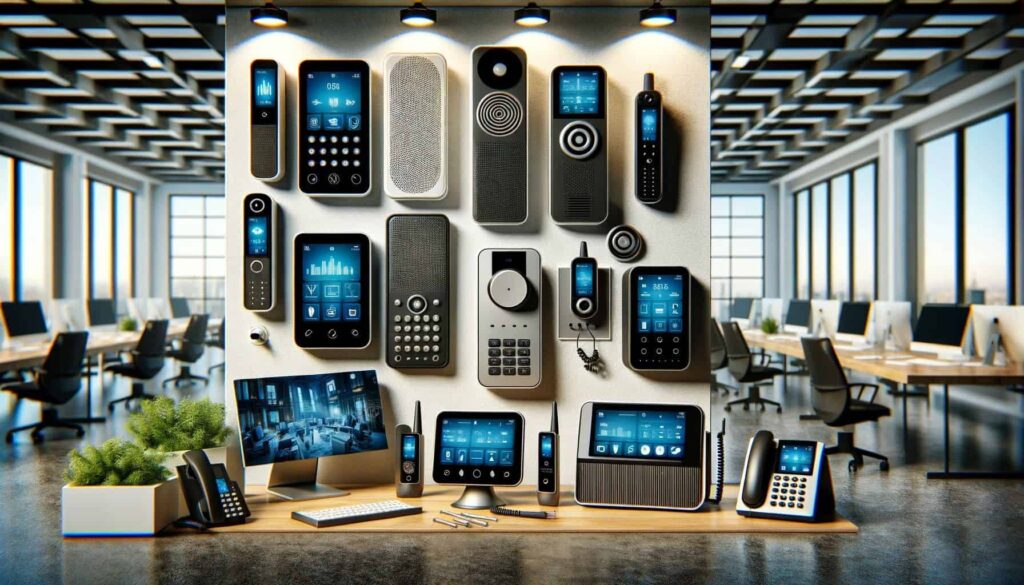
Several key types of wireless intercoms are available, each with unique capabilities tailored to different operational needs. Understanding the primary system classifications will allow you to determine the optimal solution for your office setup and usage requirements:
Full Duplex Intercom Systems
- Allow simultaneous bidirectional communication
- Both individuals can talk and listen to each other at the same time
- No need to press a push-to-talk button before responding
- Conversation flows naturally like a telephone call
- Prevent people talking over each other unlike hybrid duplex
- Create seamless back-and-forth dialog
Half Duplex Intercom Devices
- Require pressing a transmit button to talk
- Must release the button to listen
- Only one direction works at a time
- Help to prevent people talking over each other
- Limitations can lead to unnatural pauses
- Hybrid duplex balances benefits of full/half systems
Hands-Free Intercom Stations
- Allow voice-activated transmission
- No need to press physical buttons to converse
- Employees can continue tasks uninterrupted
- Convenient for quick contacts or mobile staff
- Can be triggered unintentionally by background noise
Rechargeable Wireless Intercoms
- Powered by removable batteries
- Batteries can be swapped out and recharged
- Charging bays allow refreshing batteries
- Ensures continuous uptime and reliability
- More costly than standard battery power
Long-Range Wireless Intercoms
- Maximize operational distance between stations
- Expand coverage across larger commercial sites
- Outdoor line-of-sight over 1 mile
- Enable communication between buildings
- Require higher intensity base transceiver
Portable Wireless Intercoms
- Fully wireless remote satellite units
- Run on rechargeable batteries
- Can be carried around or vehicle-mounted
- Allow communication anywhere onsite
- Flexible movable coverage
Video Doorbell Intercoms
- Provide visitor screening and access control
- Buttons outside doors connect visitors via intercom
- Integrated cameras show visitors on video screens
- Remote door unlocking enables secure entry
- Ensure safety while admitting guests
Now that you know the primary intercom system types and their unique advantages, you can determine which solution best matches your workplace needs and facilities.
Choosing the Right System for Your Office Size

Wireless intercom systems scale to meet the needs of workplaces both small and large. Matching an intercom setup to your specific office size ensures ideal coverage, capacity, and functionality.
Intercom Systems for Small Offices
Smaller professional offices have unique communications requirements and limitations including:
- Typically under 3000 square feet
- Less than 10-15 total employees
- More limited budgets
- Don’t need advanced features
Ideal small office intercom system attributes:
- Cost effective and affordable
- Simple installation with DIY ability
- Basic communication features sufficient
- Can start small and add capacity later
An expandable entry-level wireless system allows small teams unified communication without overspending.
Intercoms for Mid-Sized Offices
Medium offices have specialized needs such as:
- Footprints up to 10,000 square feet
- 10-30 employees typically
- Multiple departments/floors
- Tighter security requirements
Mid-sized workplace intercom priorities include:
- Multi-channel ability for departments
- Capacity for additional stations
- Commercial grade for reliability
- Safety/security focused features
More advanced systems facilitate seamless coordination across larger, busier employee bases. Scalability allows adapting perfectly as organizations evolve.
Intercom Setup for Large Offices
Larger enterprise facilities require maximum performance like:
- Footprints over 20,000+ square feet
- 100+ employees
- Multiple buildings/locations
- Advanced integration needs
Important large office intercom capabilities:
- Maximum range for full site coverage
- High capacity to handle volume
- Redundancy/backup ensured uptime
- Access control and security
- Emergency broadcast ability
- Integration with other systems
From single building call boxes to multi-structure systems with video entry security, commercial intercoms keep large teams running smoothly.
How to Install a Wireless Intercom System in Your Office

Installing a wireless intercom system is a straightforward process but doing it properly takes planning and care. Here is an overview of best practices:
Choose Optimal Base Station Locations
- Centrally situate the base transceiver station between satellites
- Select an elevated, dry area for best range
- Make sure sufficient power outlets are accessible
- Consider aesthetics for public-facing equipment
Carefully Follow Equipment Instructions
- Thoroughly read through entire setup manuals first
- Check included parts against inventory lists pre-install
- Step-by-step guidelines differ between systems
- Watch manufacturer video overviews for visual guidance
Methodically Install Satellite Stations
- Determine optimal station placement for full coverage
- Affix mounts securely using proper tools
- Take time fishing cables through walls/ceilings
- Avoid signal obstructions between stations
Test, Tweak, and Train on System
- Perform incremental range checks during setup
- Make small adjustments to perfect performance
- Verify full duplex communication clarity
- Train staff on core features and proper practices
While each wireless intercom system will have its own unique setup nuances, following core best practices will ensure smooth installation. Partnering with a specialty provider like Jefferson Security Cameras also guarantees expert guidance tailored to your office.
Maintaining Your Wireless Intercom System

While wireless intercoms are generally reliable, occasional issues can arise such as sound distortions or stations losing connectivity. Diagnosing and addressing problems quickly preserves critical communication capabilities. Refer to this troubleshooting reference for common challenges and fixes:
| Issue | Possible Causes | Solutions |
|---|---|---|
| No Sound/Not Working | Dead battery Electrical outage Damaged wires Failed components | Charge/replace batteries Check power supply Reconnect/replace cabling Call for repair assistance |
| Static/Fading Audio | Low battery charge Signal interference Mic/speaker obstructions | Charge batteries Change channels Clean station thoroughly |
| Limited Range | Old batteries Antenna misalignment Frequency congestion | Install fresh batteries Reorient external antennas Adjust base station channel |
| Echo/Feedback | Volume too loud Base station audio bridge issue | Turn stations volume down Reset base and resync stations |
| Incorrect Channels | Wrong channel selected Sync issues | Verify proper department channel Reinitialize equipment |
To keep your wireless intercom system running optimally for years to come, follow standard maintenance best practices:
Keep Stations Clean
- Grime buildup leads to muted microphones
- Wipe down exterior surfaces periodically
- Use disinfecting wipes to prevent germ spread
- Confirm speaker/mic holes are debris-free
Proactively Swap Batteries
- Rechargeable batteries lose capacity over time
- Stations may slowly lose range due to aging cells
- Set a routine calendar schedule for battery refresh
- Always keep spare charged batteries on hand
Diagnose and Address Common Issues:
Audio Quality Problems
- Check for obstruction between stations
- Adjust microphone sensitivity settings
- Try switching to a different channel
Limited Range
- Replace aging batteries
- Ensure antenna orientation is correct
- Upgrade to a higher powered system if needed
Power Problems
- Confirm main antenna has continuous electricity
- Reseat connectors that may have vibrated loose
Knowing how to perform basic maintenance and troubleshooting will help your high-performance wireless intercom system stay fully functional. But for complex repairs, rely on expert support.
Following this guide when irregularities occur will help isolate and remedy minor problems right away. But never hesitate to phone experts like Jefferson Security for troubleshooting assistance and repairs on more complex wireless intercom equipment issues. Our experienced support technicians have seen it all and can diagnose solutions rapidly to minimize communication disruptions.
Tips for Maximizing the Use of Your Wireless Intercom System

To get the most out of your investment in a new wireless intercom system, leverage best practices around usage, customization, and management:
Properly Train Employees on System Operation
- Designate admins to learn all features in depth
- Create easy-to-use instruction placards for stations
- Show workers how to initiate/receive calls and use features
- Clarify protocols like shift change, lunch breaks, proper etiquette
Set Up Multiple Channels for Workgroups
- Dedicate unique channels to each department
- Use different security codes per channel for privacy
- Get in the habit of selecting proper channel before transmitting
- Remind staff to adjust channels when moving between areas
Utilize Convenient Calling Features
- “All Call” instantly broadcasts to all stations simultaneously
- “Selective Calling” reaches just designated departments
- Program one-touch calling buttons for frequent contacts
- Create paging groups for crisis alerting
Perform Ongoing Quality Checks
- Test battery charge and range functionality
- Listen for sound quality and duplicate transmissions
- Ensure proper channel usage and etiquette
- Keep equipment tidy, accessories stocked
Getting your team accustomed to the ins and outs of an advanced new wireless intercom while also customizing it to your workplace needs will ensure you maximize productivity and enjoyment of your investment for the long haul.
Conclusion

Implementing a wireless intercom system delivers tremendous communication efficiency and security to take your office coordination to the next level. Going wireless frees you from the limitations and hassles of wired legacy setups without compromising performance.
However, with so many system options now available, it can be challenging to determine exactly which solution best fits your workplace size, layout and functionality needs. That’s why assessing your existing infrastructure, employee headcount, multi-location footprint, and planned growth are so crucial when selecting equipment.
The good news is that wireless intercom technology has matured to the point where scalable solutions are available to fit small single-room companies up through expansive corporate campuses. Determining how many channels, maximum range distance, battery runtime, accessories, integration ability, and future capacity you require will guide intelligent decision making.
Installation is also greatly simplified for DIY business owners but still benefits from professional consultation to identify ideal station placement and maximize coverage while minimizing dead zones. Proper mounting, wiring, and testing don’t need to be intimidating though. There are excellent resources out there combined with the collective experience of seasoned security integrators.
Ongoing maintenance largely consists of periodically wiping down stations, charging batteries, replacing worn parts, and troubleshooting things like limited reception range and noise interference. But again, having a trusted specialty provider like Jefferson Security on standby for diagnosing trickier issues or expansion needs provides peace of mind an critical infrastructure investment will continually perform optimally.
The bottom line is that once correctly set up and utilized, a modern wireless intercom becomes indispensable. The instant push-to-talk contact, enhanced coordination, emergency broadcasting ability, and flexibility simply lead to better efficiency, safety, cost savings, and workplace culture. Upgrading to this essential game-changing communication solution won’t disappoint!
With over a decade of experience installing and supporting wireless intercom and PA systems for customers across the Philadelphia region and beyond, the experts at Jefferson Security Cameras stand ready to assess your office requirements and pair you with ideal solutions for enhanced communication, safety and connectivity across your facilities. Call (267) 662-1423 or contact us to leverage our intercom system knowledge and tailor the perfect custom answers to your workplace needs, challenges and budget. Investing in seamless coordination pays dividends for your people and bottom line.
FAQs
What is the typical operating range for wireless office intercom systems?
Most systems provide an indoor range up to 300 feet and outdoor line-of-sight transmission up to 500-1000 feet. Maximum range capacities scale to 3000 feet or more for expansive commercial systems.
How long with a wireless intercom’s rechargeable batteries typically operate between charging?
Depending on usage, high-quality commercial rechargeable batteries maintain reliable performance throughout a full 8-12 hour workday on a single charge. Multiple replaceable battery packs can extend longer runtimes.
What wireless frequency band is best for radio interference resistance?
900 MHz to 2.4 GHz frequencies generally balance range and solid penetration through walls with resistance to electronic interference. The 900 Mhz band offers the best overall building penetration for larger facilities.
Can wireless office intercom systems connect multiple buildings?
Yes, with purpose-built long-range multi-channel commercial systems, satellite receiver/transmitter stations can be positioned in structures hundreds to thousands of feet apart across campuses. This requires powerful, sensitive main base stations.
How can existing wired office intercoms be upgraded to wireless?
Some wireless intercom base stations provide direct wired inputs to integrate with older intercom wiring. This allows a hybrid solution utilizing existing cabling while cutting cords on satellite stations for wireless mobility.



